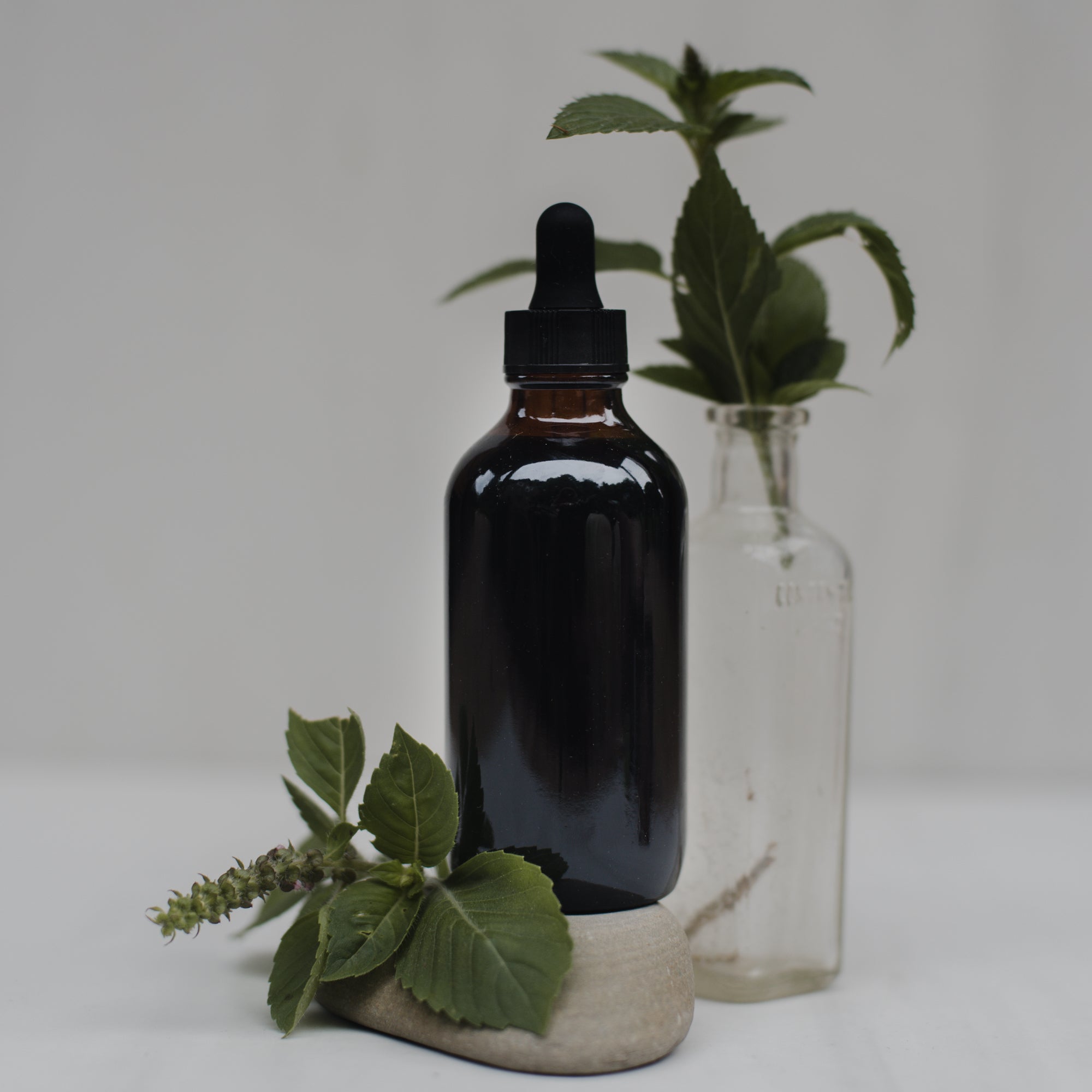There are no essential oils in my products.
Why? Let me begin here... there are enough essential oil products to fill a stadium and there are many people with sensitive skin and sensitive noses who have a hard time finding natural products without EO's added. Yes, I said sensitive skin. EO's are actually the volatile oils of a plant, the most potent part of a plant. Considering that most people are hesitant to eat medicinal plants they know little about, it's concerning that those same people will use large doses of volatile oils (the strongest part!) directly on their skin or even in their drinking water.
Volatile oils are very effective, they do their job very well. My concern is with its rampant and uninformed use. There are more and more herbalists and naturopathic professionals out there seeing this trend and are equally concerned.
On an ethical level alone, use of EO's should be done with utmost care and respect. To begin with, in order to produce a single pound of essential oil, enormous quantities of plants are required: 10,000 pounds of rose petals, 250 pounds of lavender and 6,000 pounds of lemon balm, 1,500 lemons. Not to mention the waste involved with the rest of the plant and its byproducts often being unused. If we're dropping 20+ drops of oil in our bath, we are essentially bathing in several pounds of fresh plant matter... which would seem like overkill, right? Could we not just put a sprig or two of lavender in the tub instead of the whole plant?
These oils do have their place for sure. Professionally blended formulas for stomach aches, migraines and any number of ailments can do wonders, I can attest to that myself. I have a ridiculous amount of bottles in my cupboard that I've acquired over the years, but have really limited my use of them as my curiosity around them grew and I dove deeper into the information.
If you use EO's, take some time to research them fully. Research the brands you have and find out how clean their products actually are. Learn about how much plant matter goes into one single drop of your favourite oils and you might begin to use them more sparingly, even more respectfully. If you craft your own perfumes, try using a fraction of the EO's you normally would at a higher dilution. If you want to use therapeutic blends, try contacting a certified professional aromatherapist like the lovely Diane from Aromasynergy to find out what you should use and how to use it or ask for a custom blend. I was shocked to find out that peppermint and eucalyptus are actually ill advised for young children and can cause shortness of breathe for example. There is a lot of info missing from those beautifully designed pamphlets and DIY blogs.
So if I don't use EO's, what do I use? I use whole plant medicine. I'm not extracting any one component, but rather using the whole leaf, stem, root or flower. Does this make it less potent? Well, yes. But I'm not trying to make pharmaceuticals, I'm making gentle medicine. And when using the whole plant, you get a more complex product. This also means my products don't have a strong smell. Some still do, including the body oils, but even then it's not super powerful. We've been trained into thinking it has to smell strong to be effective, but that's simply not the case. When I began making my own products years ago I was so disappointed at how little they smelled. I felt as though they wouldn't work very well and need a little 'kick' of EO's. Now though I delight in the mild fragrances. I've rid our home of synthetic fragrances entirely and my nose is now more attuned to the subtler scents. This does mean of course that I feel mildly assaulted when I stand next to someone who uses fabric softener, standard body lotions and antiperspirant. But, so it goes.


